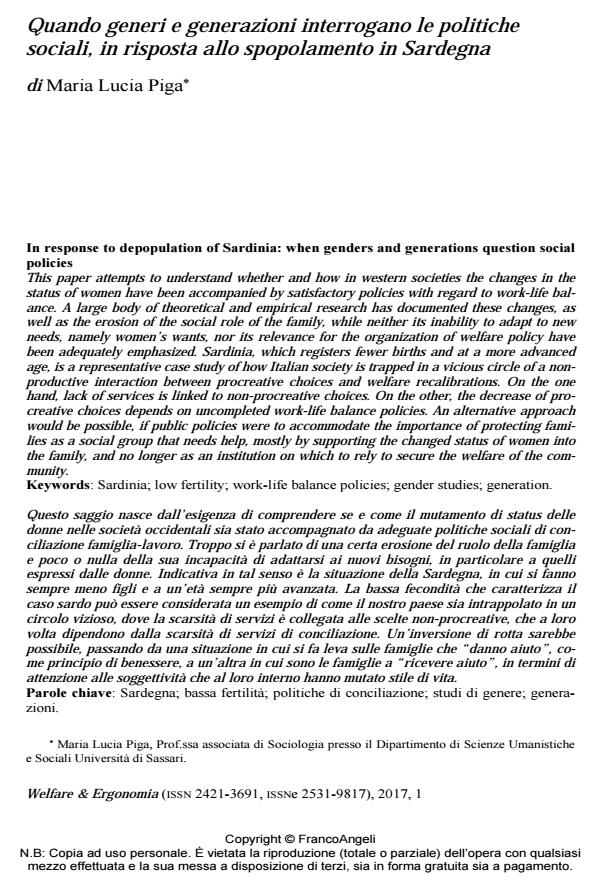In response to depopulation of Sardinia: when genders and generations question social policies
Journal title WELFARE E ERGONOMIA
Author/s Maria Lucia Piga
Publishing Year 2018 Issue 2017/1
Language Italian Pages 13 P. 63-75 File size 201 KB
DOI 10.3280/WE2017-001004
DOI is like a bar code for intellectual property: to have more infomation
click here
Below, you can see the article first page
If you want to buy this article in PDF format, you can do it, following the instructions to buy download credits

FrancoAngeli is member of Publishers International Linking Association, Inc (PILA), a not-for-profit association which run the CrossRef service enabling links to and from online scholarly content.
This paper attempts to understand whether and how in western societies the changes in the status of women have been accompanied by satisfactory policies with regard to work-life balance. A large body of theoretical and empirical research has documented these changes, as well as the erosion of the social role of the family, while neither its inability to adapt to new needs, namely women’s wants, nor its relevance for the organization of welfare policy have been adequately emphasized. Sardinia, which registers fewer births and at a more advanced age, is a representative case study of how Italian society is trapped in a vicious circle of a non-productive interaction between procreative choices and welfare recalibrations. On the one hand, lack of services is linked to non-procreative choices. On the other, the decrease of procreative choices depends on uncompleted work-life balance policies. An alternative approach would be possible, if public policies were to accommodate the importance of protecting families as a social group that needs help, mostly by supporting the changed status of women into the family, and no longer as an institution on which to rely to secure the welfare of the community.
Keywords: Sardinia; low fertility; work-life balance policies; gender studies; generation.
Maria Lucia Piga, Quando generi e generazioni interrogano le politiche sociali, in risposta allo spopolamento in Sardegna in "WELFARE E ERGONOMIA" 1/2017, pp 63-75, DOI: 10.3280/WE2017-001004